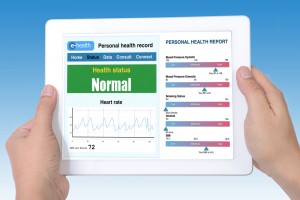
This new digital report from the King’s Fund stresses the importance not to lose sight of the need for innovation and improvement amidst the current financial pressures. The report brings together examples of service improvement from the NHS and internationally, aiming to inspire local change programmes. The case studies stem from the Time to Think Differently programme of work which involved patients, volunteers, clinicians and managers in discussions about the future of health care.
The report is easy to read with a range of case studies, including video clips and slideshows alongside written vignettes, which give a very interactive feel. It’s useful to read the different perspectives (patient and professional) – for me, this could have been more powerful if there were links to find out more, via published articles or organisational contact details.
What can we learn from successful innovations?
The featured innovations and case studies include:
- Using technology to improve communication between professionals and patients (e.g. email, Skype and smartphones) and enabling patients through access to and contributing to their own records

Access for patients to contribute to their own health records can empower patients with long term conditions
- Empowering and involving patients in their own care, providing the example of self-dialysis in Jonkoping, Sweden where patients operate self-dialysis machines and are able to attend when it best suits them
- Recruitment of community “health champions” to influence behaviour change and health improvement at a local level, including a “Seniors show the way” group and a network of young health champions using social media to reach groups who may be missed using traditional communication routes
- The use of online communities to provide support and promote wellbeing, such as the Big White Wall, an anonymous early intervention service for people in psychological distress
- Collaborations between primary care and local communities to address social influences on health, such as that in the Bromley by Bow health centre, which has developed a range of services including a therapeutic horticultural project to support adults with mental distress
- Developing multidisciplinary and cross-sector services to support patients with multimorbidities providing consistent and seamless care, such as the Leeds Geriatric Interface Service, ensuring the necessary support and organisational development to enable new ways of working
- The potential for personalised medicine, enabled through technology and better use of data, to provide more targeted treatments and to identify risk factors
- The role of Academic Health Science Networks in driving innovation in healthcare – Imperial College Health Partners are one of 11 partners delivering the 100,000 Genomes Project, aiming to sequence 100,000 genomes by 2017

Imperial College Health Partners are involved in the 100,000 Genomes project which will drive new treatments in future
- Using ubiquitous technologies in new ways, such as smartphones as diagnostic tools, such as Peek Vision’s app which uses the phone’s camera to scan the lens of the eye for cataracts
- The reconfiguration of services towards more alignment, such as the new dedicated emergency care hospital in Northumbria
A key message from the report is that the current pressures and political strategies, whilst providing a high pressured environment, can provide the stimulus for new models and innovations. The Buurtzog model in the Netherlands, where nurses have more control over their work with patients, may not necessarily be reproducible here but may help to generate new ideas for new models of care. The report also reflects on the changing landscape which is constantly changing and lacks certainty – the ability to deal with uncertainty and ambiguity is critical.

Uncertainty and ambiguity are part of the constantly changing landscape and commissioners will need to manage this complexity
Commentary
The report is an accessible and concise summary of a range of interesting improvements and innovations which, whilst not necessarily directly applicable to their local settings, may well inspire commissioners through the ambition and approaches described. Commissioners may wish to consider:
- What mechanisms are in place to enable co-production of ideas and improvements with patients and local community groups?
- What governance structures are in place to support the generation and development of ideas, including testing and piloting?
- What are the characteristics of the local context which may help to evaluate the applicability of innovations elsewhere?
- What policies are in place regarding the evaluation and sharing of local innovations?
Link
Ham C and Brown A (2015) The future is now: the innovations of today that point to better health care tomorrow, King’s Fund.

Today @ali_pals on @thekingsfund digital report of innovations that have improved patient care & experience http://t.co/c060puHqFg
Innovation case studies point to a co-productive approach acknowledging risk taking and organisational development http://t.co/uhQPwtraeU
Take a look at my new blog for @CommissionElf https://t.co/RoLnXz3IrK
New report from @thekingsfund stresses importance of innovation & improvement amidst current financial pressures http://t.co/c060puHqFg
Learning from successful innovations http://t.co/OKyRpngfpx
Don’t miss new digital report from @thekingsfund on innovations to improve patient care http://t.co/c060puHqFg